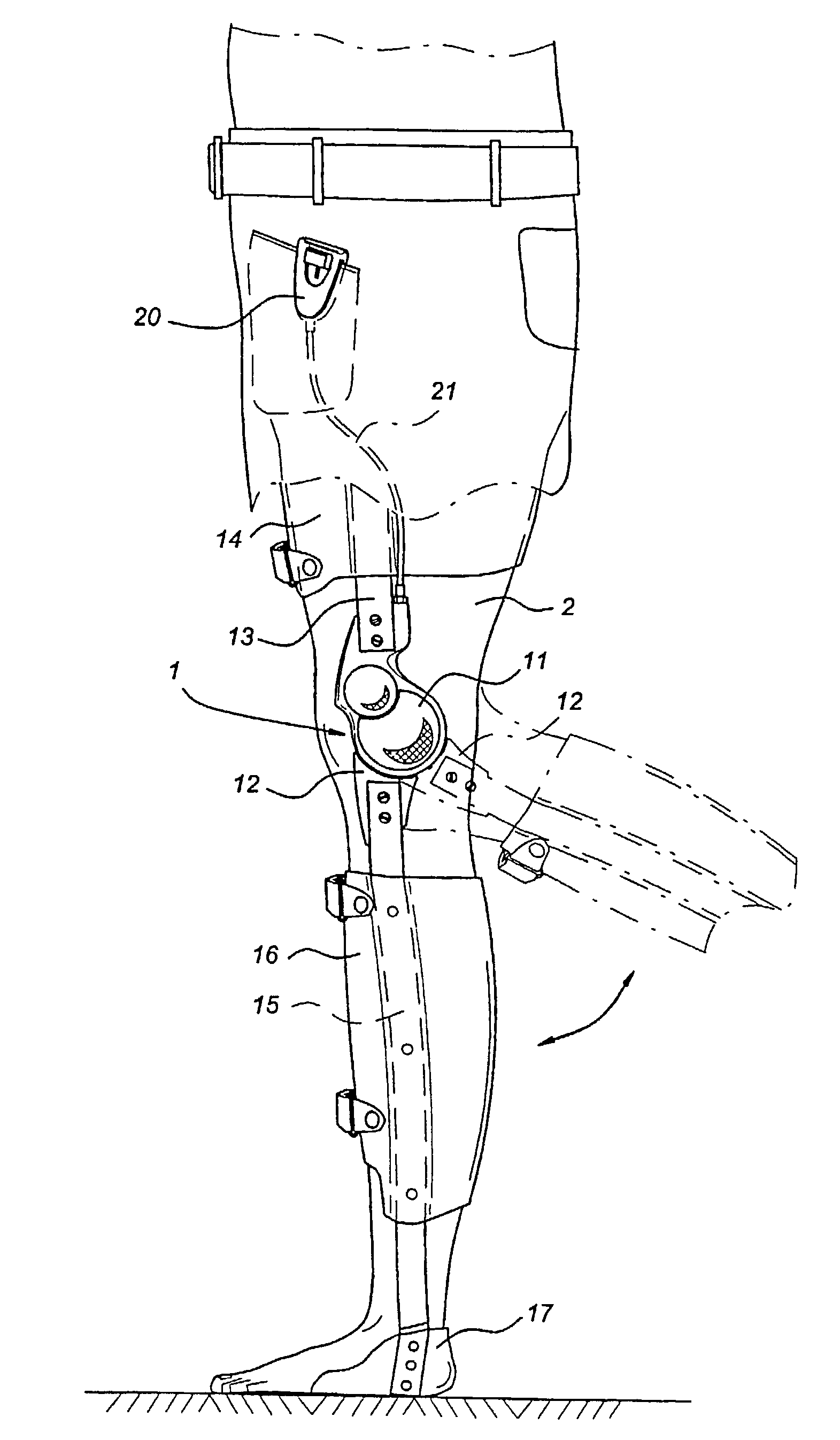Gravity operated locking hinge
a gravity-operated, hinge technology, applied in the field of hinges, can solve the problems of knee joint unlocking, and the user walking with a stiff leg, and achieve the effect of preventing the pivot pin
- Summary
- Abstract
- Description
- Claims
- Application Information
AI Technical Summary
Benefits of technology
Problems solved by technology
Method used
Image
Examples
Embodiment Construction
[0051]FIG. 1 shows the hinge 1 that is incorporated in an orthopedic knee joint. The orthopedic knee joint is attached to one leg 2 of a user. The orthopedic knee joint 1 comprises a first part 11 and a second part 12 that are connected to one another such that they can turn. The first part 11 is provided with a bracket 13 on which a fixing element 14 is mounted. Said fixing element 14 is used to attach the orthopedic knee joint to a user's thigh. In the same way, the second part 12 of the hinge 1 is provided with a bracket 15 on which a second fixing element 16 is fixed for attaching the orthopedic knee joint to the user's lower leg. In addition, a support 17, for supporting the user's foot, is fitted at the end of the bracket 15. The hinge 1 can be locked with the aid of a locking element. This is further explained with reference to FIGS. 2 and 3. During the walking movement of a user, this locking element can be moved from a first position for releasing the hinge 1 into a second ...
PUM
 Login to View More
Login to View More Abstract
Description
Claims
Application Information
 Login to View More
Login to View More - R&D
- Intellectual Property
- Life Sciences
- Materials
- Tech Scout
- Unparalleled Data Quality
- Higher Quality Content
- 60% Fewer Hallucinations
Browse by: Latest US Patents, China's latest patents, Technical Efficacy Thesaurus, Application Domain, Technology Topic, Popular Technical Reports.
© 2025 PatSnap. All rights reserved.Legal|Privacy policy|Modern Slavery Act Transparency Statement|Sitemap|About US| Contact US: help@patsnap.com



